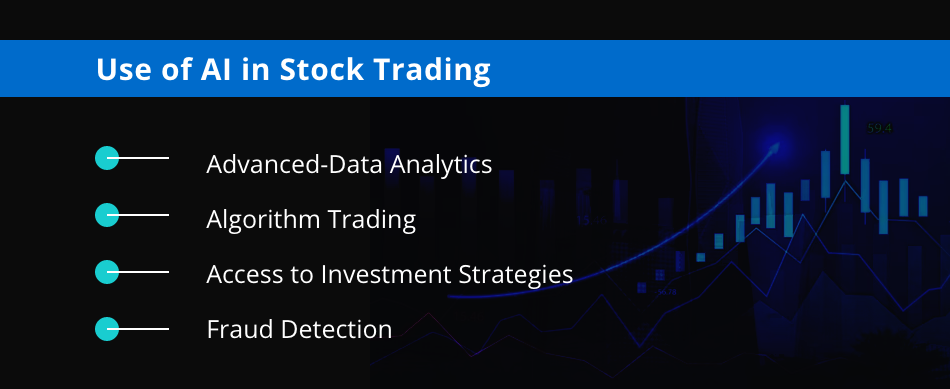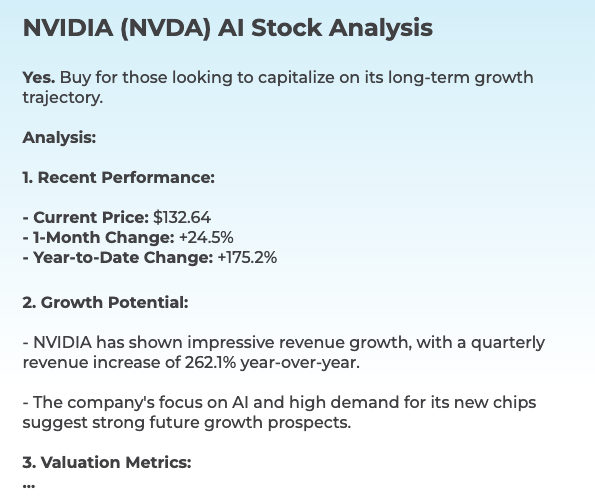20 Recommended Info For Choosing AI Stock Investing Analysis Websites
20 Recommended Info For Choosing AI Stock Investing Analysis Websites
Blog Article
Top 10 Tips To Evaluate The Integration And Compatibility Of Ai Predictive/Analyzing Trading Platforms
Integration and compatibility are key factors when evaluating AI platform for stock prediction and analysis. Integrating your platform with existing systems, tools, and workflows is a great way to increase efficiency. Here are the top 10 ways to evaluate the compatibility and integration between these platforms.
1. Check Brokerage Integration
Supported brokers: Ensure the platform integrates with the brokerage you prefer account, or trading account.
Trade execution: Determine whether your platform allows you to make trades directly via the integrated broker.
Account synchronization - Check to see if the platform you are using can synchronize account balances, transactions, and positions in real-time.
2. Assess the API Availability
API access: Make sure that the platform offers an API (Application Programming Interface) for developers to build customized tools or to automate workflows.
API documentation: Check to see if there are examples that clearly demonstrate how the API can be utilized.
Rate Limits: Check the API's rates limits to make sure that they are reasonable and can handle your anticipated usage.
3. Review Third-Party Integration
Popular tools: Find out whether your platform is compatible with the most popular tools such as Google Sheets or Excel.
Export and import of data: Ensure that the platform supports easy export and import of data to and from other tools.
Extensions/Plugins: Check if the platform is compatible with extensions or plugins to add functionality.
4. Test Compatibility With Operating Systems
Desktop compatibility: Make sure the system you select is compatible with Windows, macOS and Linux.
Mobile compatibility - Look to see if a platform has a mobile version available for iOS as well as Android.
Web-based Access: Make sure you can connect to the platform through a browser, which will allow you to be more flexible.
5. Assess Data Integration Capabilities
Data sources: Make sure that the platform can integrate multiple data sources, such as the market data providers RSS feeds, sentiment on social media.
Real-time data streams: Verify that the platform has the ability to incorporate real-time data streams for the most current analysis.
Historical data import: Determine whether the platform allows import of historical data to backtest or analyze.
6. Cloud and On Premise Compatibility
Cloud-based platforms: Ensure that the platform can be accessed from any place with an internet connection.
Solutions on-premise: If you prefer to deploy on premises, check whether the platform is compatible with it.
Find hybrid solutions. This is a method that blends cloud and on-premises features.
7. Check for Cross-Platform Synchronization
Device synchronization - Ensure that your platform is synchronized to sync settings and data across all devices (desktops, mobiles, tablets).
Verify the real-time update to see whether any changes made by one device will reflect instantly on the other.
Offline Access: Check to determine if there are any restrictions on the platform's functionality or data access if it is offline.
8. Analyzing the compatibility of trading strategies
Automated or Algorithmic trading: Make sure that the trading platform supports these strategies.
Custom indicators: Check if your platform supports the use of indicators or scripts that are unique to you.
Strategy backtesting. Verify that the platform supports strategies for backtesting based on historical data.
9. Assess Security and Compliance
Data encryption: Make sure the platform is using encryption to protect information in transit as well as at rest.
Verify that the platform supports secure methods of authentication (e.g. Two-factor authentication).
Regulatory compliance - Check if your platform is compliant with pertinent laws, e.g. GDPR. FINRA. SEC.
10. Test Scalability and Performance
Scalability: Make sure your platform can handle an increasing amount of data and users to ensure that it is able to grow with your business.
Performance under load: Determine whether your platform can adapt to high volatility market conditions.
Utilization of resources: Determine if the platform efficiently uses system resources (CPU, memory, bandwidth).
Bonus Tips
User feedback: Look for testimonials and reviews from users when you are evaluating the site.
Trial period: Test the platform for free or download a demo to test how it works with your current software and workflow.
Customer Support: Make sure your platform has a robust support for integration problems.
By following these tips, you can effectively assess the integration and compatibility of AI stock predicting/analyzing trading platforms in order to ensure they are compatible with your existing systems, and improve your trading efficiency. Follow the best here about ai stock trading for more tips including ai for investing, ai stock picker, ai investing platform, ai investing app, ai stock trading bot free, best ai stock, market ai, trading with ai, best ai stock, ai trading and more.
Top 10 Tips For Evaluating The Updates And Maintenance Of Ai Stock Predicting/Analyzing Trading Platforms
It is essential to review the maintenance and updates of AI-driven stock prediction and trading platforms. This will help ensure that they're secure and in line with changing market conditions. Here are 10 tips for evaluating their updating and maintenance procedures.
1. Updates Frequency
Check the frequency of your platform's updates (e.g. every week, monthly or quarterly).
The reason: Regular updates show an active and flexible development, as well as a willingness to respond to market changes.
2. Transparency is the key to the Release Notes
TIP: Go through the release notes on your platform to learn about any improvements or modifications.
Why? Transparent release notes show the platform's dedication to continual improvements.
3. AI Model Retraining Schedule
Tip - Ask how often AI models are retrained based on new data.
Why: Because markets change constantly and evolving, it is essential to keep up-to-date models to remain current and relevant.
4. Bug fixes, Issue Resolution
Tip: Check the speed at which the platform resolves bugs and technical issues.
Why: Prompt corrections to bugs will ensure the platform remains reliable and functional.
5. Security Updates
Tips: Make sure that the website is regularly changing its security procedures to protect users' data and trading activity.
The reason: Cybersecurity is a crucial aspect of the financial services. It aids in safeguarding against hacking and other breaches.
6. New Features Integration
Check to see if new features are introduced (e.g. the latest data sources or advanced analytics) in response to the feedback of users and market trends.
Why? Feature updates are a sign of creativity and responsiveness to the needs of users.
7. Backward Compatibility
Tips: Make sure that the update does not cause any major disruption to existing functionality or require a significant change in configuration.
Why? The backward compatibility of the software assures smooth transitions.
8. Communication between Users and Maintenance Workers
Tips: Make sure that users are informed about planned maintenance or downtime.
Why: A clear communication can reduce disruptions and help build trust.
9. Performance Monitoring and Optimization
Tip: Check if the platform continuously monitors performance indicators (e.g. latency, latency and accuracy) and then optimizes its system.
The reason: Continuous optimization of the platform ensures it remains effective and scalable.
10. Compliance with Regulatory Changes
Tips: Find out whether the platform provides new features or policies that are in line with regulations governing financial transactions and data privacy laws.
What's the reason? To reduce legal risk and maintain user's confidence, compliance with the regulatory framework is vital.
Bonus Tip - User Feedback Integration
Find out if the platform integrates active feedback from its users when it comes to updates and maintenance processes. This is a sign of a user-centric approach as well as a dedication to improvements.
By evaluating the above aspects and other aspects, you'll be able to determine whether or not the AI trading and stock forecasting platform that you select is well maintained, current and capable adapting to the changing market conditions. Follow the best related site about stock predictor for more recommendations including ai stock price prediction, free ai stock picker, trading ai tool, best ai stocks, best ai stocks to buy now, ai options trading, ai trading tool, investing with ai, ai stock investing, best ai for stock trading and more.